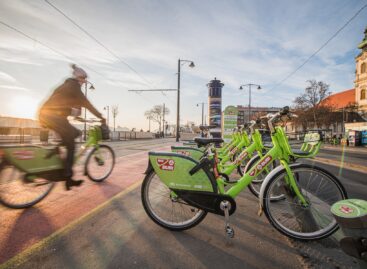Corvinus research: how ecologically unsustainable are households in the Budapest urban area?
From an ecological point of view, Budapest and its surroundings are amazingly unsustainable: the ecological footprint related to the household consumption of a resident of the capital is 2.5 global hectares, and that of a person living in an agglomeration is almost 3 global hectares. Taking the ecological capital, i.e. the biocapacity of the land, into account, the overload of the capital city is 30 times, that of the agglomeration is 2.4 times – states a recent Hungarian study with the involvement of the Corvinus University. According to the research, growing prosperity does not ease the pressure on the environment, so greater environmental efficiency and new consumption habits are needed.

(Photo: Pixabay)
A study by a Hungarian research group of four was published in the journal Sustainable Cities and Society in September, which analyzes the environmental sustainability of Hungarian urbanization and the Budapest capital region in a new way by simultaneously comparing the ecological footprint of households and the biocapacity of the available land. The ecological footprint shows the demand, i.e. how many hectares of land are needed to produce the materials used. In 2018, expenditure on food and beverages, housing-related energy consumption, transport, alcohol and tobacco contributed the most to Hungary’s ecological footprint. Biocapacity indicates the ecological supply, i.e. the carrying capacity: how much biologically fertile land there is in the examined area, which can produce renewable resources and absorb the waste from it. Calculations were made in global hectares taking into account crop yields. The publication, made with the involvement of researchers from the Eötvös Loránd Research Network, the Regional Research Center of the Hungarian Academy of Sciences, the István University of Széchenyi, and the Corvinus University of Budapest, examined the period between 2003 and 2018. The authors found that the ecological deficit of the country as a whole has been gradually decreasing since the beginning of the 2000s, which is due to the decrease in population and the increase in biocapacity for the country as a whole. However, Budapest’s ecological resources have decreased, which may be due to the deterioration of environmental quality, the shrinking of biologically active surfaces caused by urbanization, and urbanization. The share of the Budapest metropolitan area, which includes the capital and its agglomeration, in Hungary’s total ecological footprint increased from 28.3 percent to 31.5 percent between 2003 and 2018.
Budapest’s congestion is high, although slightly decreasing
While in 2003 the inhabitants of the capital would have needed 34 times as much land to achieve sustainability as they actually had at their disposal, by 2018 this ratio had decreased somewhat – to 30 times. In the agglomeration zone, however, the exceedance increased: from 2.1 to 2.4 times. This is a 7 percent increase in a decade and a half, which is not offset by the biocapacity of the ecosystem on the supply side. According to the study, there are still “ecological reserves” in the rest of Hungary, which increased from 13 percent to 24 percent between 2003 and 2018. This can be related, on the one hand, to the significant population decline outside the metropolitan region of Budapest (from 7.4 million in 2003 to 6.8 million in 2018), and on the other hand to the improvement of the efficiency of agricultural production. The data did not prove the inverted U-shaped relationship between urbanization and the ecological footprint, assumed by many in the literature, and Hungary’s values fell during the global financial crisis. The results can help policy makers to identify hotspots responsible for above-average ecological imbalances in urban regions.
“In order to change people’s consumption behavior and improve environmental efficiency in aging societies with a highly centralized urban system like Hungary’s, special programs aimed at primary metropolitan areas should be launched to reduce the further growth of the ecological footprint and stop the shrinking of biocapacity. Such a program can be, for example, support for the public transport system, energy efficiency investments or developments according to the compact city concept,” said co-author Gábor Harangozó, head of the Department of Sustainability Management and Environmental Economics at Corvinus University.
The study was published in the September issue of the journal Sustainable Cities and Society.
Related news
You can still use bubi in the capital after December 23rd
🎧 Hallgasd a cikket: Lejátszás Szünet Folytatás Leállítás Nyelv: Auto…
Read more >Too many gifts, too much food: our holiday excesses are putting a serious strain on the environment
🎧 Hallgasd a cikket: Lejátszás Szünet Folytatás Leállítás Nyelv: Auto…
Read more >Lidl Austria Expands Electric Supply Fleet
🎧 Hallgasd a cikket: Lejátszás Szünet Folytatás Leállítás Nyelv: Auto…
Read more >Related news
Christmas shock in commerce: for the first time, we can pay with bank cards in fewer places
🎧 Hallgasd a cikket: Lejátszás Szünet Folytatás Leállítás Nyelv: Auto…
Read more >Hungarian Confectionery Manufacturers Association: trends in 2025 and prospects for 2026
🎧 Hallgasd a cikket: Lejátszás Szünet Folytatás Leállítás Nyelv: Auto…
Read more >Most grocery chains will be open until noon on December 24th
🎧 Hallgasd a cikket: Lejátszás Szünet Folytatás Leállítás Nyelv: Auto…
Read more >






